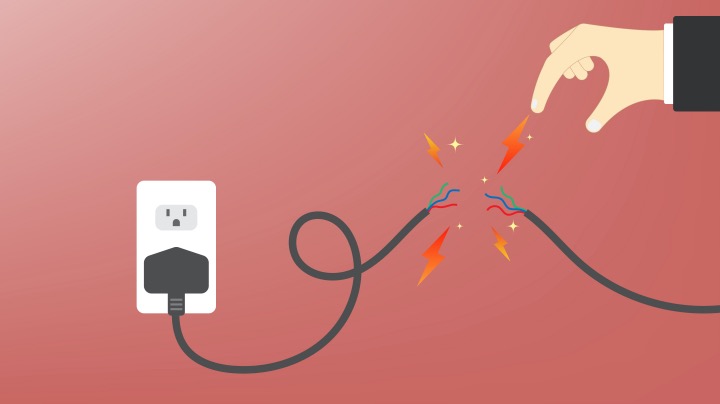Achieve adherence with dependable regulatory compliance assistance in all sectors.
Top Tips for Effective Electrical System Troubleshooting
Fixing electrical systems needs a methodical strategy, grounded in a comprehensive understanding of electric principles and safety and security procedures. By acquainting oneself with circuit elements, making use of necessary tools, and sticking to a structured analysis method, specialists can efficiently recognize and deal with concerns. The nuances of reliable troubleshooting prolong past simple technical expertise; understanding exactly how to record searchings for and prioritize security can significantly influence results. As we discover these crucial aspects better, it comes to be clear that understanding this process is not simply advantageous yet crucial for success in the area.
Understand the Basics
Understanding the basics of electric systems is essential for effective troubleshooting, as a solid structure permits professionals to detect and fix problems much more effectively. A detailed understanding of electrical concepts, such as voltage, existing, resistance, and power, is critical in recognizing the source of problems. Voltage is the electric potential difference that drives present through a circuit, while resistance opposes the circulation of current, affecting the general functionality of the system.
Experience with circuit components, consisting of resistors, capacitors, diodes, and changes, is likewise paramount. Each element plays a distinct function in circuit behavior and can impact efficiency when malfunctioning. Furthermore, understanding collection and parallel circuit setups is essential, as these plans influence the distribution of voltage and present within the system.
Moreover, understanding of safety procedures is indispensable. Service technicians need to understand prospective threats, such as shock and short circuits, to carry out secure troubleshooting practices. By understanding these foundational ideas, technicians improve their capacity to perform effective diagnostics and repair services, ultimately causing boosted efficiency and reliability of electrical systems. This foundational understanding is the foundation of effective fixing ventures.
Gather Necessary Devices
Efficient troubleshooting of electrical systems requires the best set of devices to identify and fix issues properly. Important tools consist of a multimeter, which determines voltage, current, and resistance, permitting for accurate evaluations of electric elements.
Furthermore, shielded hand devices such as screwdrivers, pliers, and wire pole dancers are important for securely controling electrical links. It is also suggested to have a circuit tester handy to verify the visibility of voltage in outlets and cables. For more complicated systems, a thermal imaging cam can help find overheating components, showing potential failings.

Adhere To a Systematic Approach
Having gathered the suitable tools, the next step in troubleshooting electrical systems is to comply with a methodical technique. A systematic method makes sure that service technicians can recognize mistakes efficiently and precisely, reducing downtime and avoiding unnecessary repair work.
Begin by evaluating the system's schematic diagrams and requirements. This entails monitoring each element systematically, beginning from the power resource and working in the direction of the tons.
Utilize testing tools, such as multimeters and oscilloscopes, to gather unbiased data regarding voltage, current, and resistance at numerous points within the system. This empirical proof will guide your troubleshooting initiatives and help to validate or get rid of potential reasons for failure.
Additionally, consider ecological factors that might influence the system's efficiency, such as temperature fluctuations or wetness ingress. An extensive inspection of wiring, links, and elements will make certain that all possibilities are made up.
File Your Searchings For
Detailed paperwork is important in the repairing procedure of electric systems. Accurate records boost the efficiency of determining persisting problems and promote communication among group members. Each finding must be carefully kept in mind, including signs observed, examinations performed, and the outcomes of try this website those tests. electrical system troubleshooting. This method not just aids in comprehending the origin of the problem however likewise works as a reference for future troubleshooting initiatives.

Additionally, keeping a log of parts changed or repairs performed is important. This information sustains inventory monitoring and can aid analyze the longevity and reliability of particular parts.
Ultimately, the documents procedure ought to be comprehensive yet concise, allowing easy access and evaluation - electrical system troubleshooting. By prioritizing thorough paperwork, service technicians can create a beneficial understanding base that not only aids in current troubleshooting yet likewise encourages future maintenance initiatives, thus boosting overall system integrity

Prioritize Safety And Security Steps
Identifying the fundamental dangers connected with electrical systems is critical for making sure her explanation safety and security during troubleshooting. Electric shock, burns, and tools damage are simply a few of the prospective threats that specialists encounter. Focusing on safety procedures is not just a legal responsibility however also a moral critical that safeguards both the technician and the surrounding atmosphere.
Prior to starting any troubleshooting task, professionals should don proper personal safety tools (PPE), consisting of insulated gloves, security glasses, and flame-resistant garments. Making certain that the workplace is dry and complimentary of mess can dramatically lower the threat of accidents. It is important to de-energize circuits before beginning any work, confirming that they are not live through the use of a multimeter or voltage tester.
Establishing clear interaction methods my response with group participants is likewise crucial; this makes certain that everyone recognizes prospective risks and the condition of the electrical system being serviced. Having an emergency action plan in place can prove very useful in the occasion of an event. By prioritizing precaution, professionals can successfully alleviate dangers and foster a more secure work environment.
Conclusion
Reliable electric system troubleshooting depends on a comprehensive understanding of fundamental principles and a systematic method. Focusing on safety steps makes sure the well-being of individuals included and the honesty of the electric system.